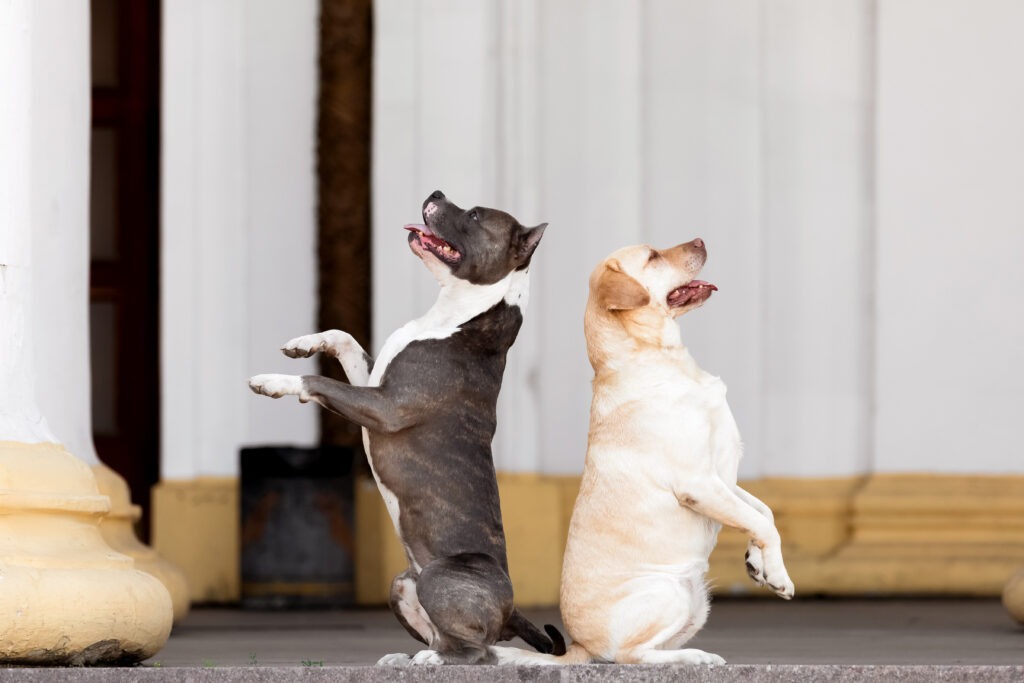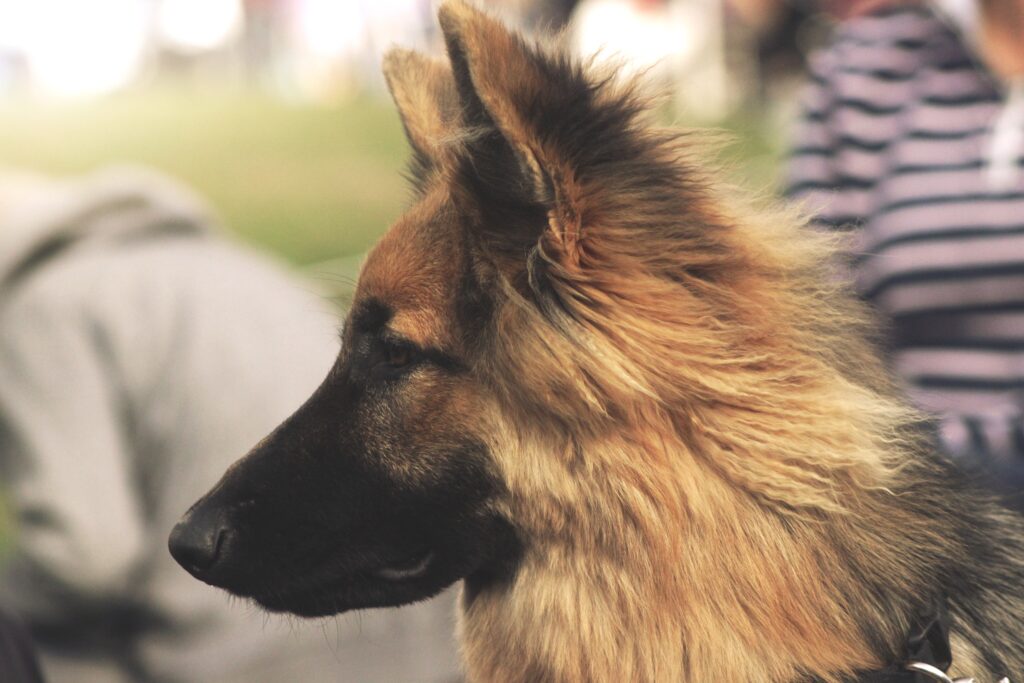Introduction to Canine Body Language
Canine Body Language serves as a cornerstone in our interactions with our furry friends, and it extends beyond the mere act of bonding; it is a fundamental pillar of responsible pet ownership. Your ability to comprehend and Interpret Dog Gestures and signals is not just a skill but a profound form of communication that can significantly enhance your relationship with your canine companion while also safeguarding their overall well-being. In this comprehensive guide, we embark on a journey deep into the intricate realm of canine communication, unveiling the hidden language through which your dog expresses their innermost thoughts, emotions, and needs.
Understanding Canine Body Language goes far beyond the superficial aspects of pet ownership. It is a commitment to truly connecting with your dog on a level that transcends words. When you learn to decipher the subtle cues and signals your dog employs, you open the door to a world of profound understanding. This understanding empowers you to respond to your dog’s needs and desires effectively, ultimately fostering a stronger and more harmonious bond. Imagine the ability to discern when your dog is content and relaxed, when they’re anxious or excited, or when they may require your support or reassurance.
Throughout this comprehensive guide, we will explore the core elements of canine body language, leaving no stone unturned. From the fundamental basics like posture, facial expressions, and tail movements to the complexities of recognizing stress and anxiety, we aim to provide you with a holistic understanding. Furthermore, we will take a closer look at the enigmatic world of tail wagging, a gesture often misinterpreted but holding the key to your dog’s emotional state. Backed by scientific insights, research findings, and expert observations, you will gain the knowledge and confidence to accurately interpret your dog’s gestures and signals, ensuring their emotional well-being and strengthening your bond.
This blog on Canine Body Language is not just about becoming a more knowledgeable pet owner; it is a profound exploration of empathy and connection. It is an invitation to discover the intricate nuances of your dog’s feelings and thoughts, where love is spoken through the language of gestures and signals. So, let’s embark together on this enlightening voyage into the world of canine communication, where understanding paves the way for a deeper, more enriching relationship with your cherished furry companion.
Basics of Canine Communication
Understanding the Basics of Canine Communication is fundamental for every dog owner. Canine Body Language is the primary means through which dogs convey their thoughts, emotions, and intentions to us and to other dogs. To truly appreciate this form of communication, it’s essential to grasp why dogs use body language as their primary mode of expression.
Unlike humans, who rely heavily on spoken words, dogs primarily communicate non-verbally. They lack the vocal range and complexity of language that we possess, so their reliance on body language is paramount. Within this non-verbal realm, they employ a variety of cues to convey their feelings and needs, including posture, facial expressions, and tail movements. These cues collectively form the foundation upon which we can Interpret Dog Gestures and understand their behavior.
One key principle to remember when it comes to Canine Communication Signs is the subtlety with which dogs convey their emotions. Dogs are masters of nuance, using minor adjustments in their body language to express a wide range of emotions and intentions. The way they stand, move, and hold their tails can provide invaluable insights into their state of mind.
For instance, a dog that is relaxed and in a playful mood will typically exhibit a wagging tail held at a medium height. This signals their friendly disposition and eagerness for interaction. On the other hand, a dog that is fearful or anxious may display a starkly different posture, often tucking their tail between their legs as a sign of distress or discomfort.
Recognizing these nuances in Canine Body Language is the foundation upon which effective communication with your dog is built. It allows you to respond appropriately to their emotional state and create an environment where they feel understood and cared for. As we continue to explore the intricacies of canine body language in this guide, you’ll gain a deeper appreciation for the rich and nuanced world of dog communication.
Common Dog Gestures and What They Mean
To effectively Interpret Dog Gestures, it is crucial to become well-versed in common canine body language signs. In this section, we will explore some of the most prevalent gestures and their meanings, supported by scientific studies and observations.
- Reading Dog Behavior through Posture: A dog’s posture is a powerful indicator of their emotional state. By observing their stance, you can glean valuable insights into whether they are feeling confident, submissive, or fearful.
- A confident dog will typically stand tall with their head held high, often with a relaxed body posture. They may exude an air of self-assuredness, which can be seen in their overall demeanor.
- On the other hand, a submissive dog may crouch down and lower their body. They might avert their gaze, tuck their tail between their legs, and even roll onto their back, exposing their vulnerable belly. These actions are an attempt to appease and show deference to a more dominant individual, be it a person or another dog.
- Analyzing Dog Expressions: Understanding Dog Signals also requires paying close attention to their facial expressions. A dog’s face can convey a wealth of information about their current state of mind.
- A relaxed and content dog will typically have soft eyes, with a slightly open mouth. Their gaze may be gentle and unthreatening, and their facial muscles will be relaxed.
- Conversely, a dog displaying aggression may have a tense face with narrowed eyes and bared teeth. These are clear signs of distress or a readiness to defend themselves. It’s essential to approach such a dog with caution and respect their boundaries.
- Canine Communication Signs through Tail Movements: Tail wagging is one of the most iconic yet often misunderstood gestures in Canine Body Language. To interpret it accurately, it’s crucial to consider the context and the dog’s overall body language.
- A fast and enthusiastic tail wag typically indicates excitement and happiness. The dog may also exhibit other signs of joy, such as playfulness and a relaxed body.
- Conversely, a slow and cautious tail wag may indicate uncertainty or hesitation. In some cases, it can signal that the dog is assessing a situation before deciding how to react.
- Interpreting Pet Body Language with Ears: A dog’s ears are highly expressive and can provide valuable insights into their mood and attentiveness.
- Forward-pointing ears generally signify attentiveness and curiosity. When a dog is interested in something or someone, their ears may perk up as they focus on the source of their interest.
- Pinned-back ears, on the other hand, can indicate fear, aggression, or submission. Dogs may flatten their ears against their head to protect them or to show submission to a dominant individual.
- Deciphering Canine Communication via Vocalizations: While not strictly part of body language, vocalizations are an integral component of a dog’s communication repertoire. Learning to differentiate between various vocal cues is vital for understanding their needs and emotions.
- Barking can serve multiple purposes, from alerting to potential threats to expressing excitement or anxiety.
- Growling may signal discomfort, aggression, or a desire to protect something valuable.
- Whining can indicate distress, anxiety, or a need for attention or comfort.
Incorporating these observations into your understanding of Canine Body Language will allow you to communicate more effectively with your dog, respond to their needs, and strengthen your bond. Remember that each dog is unique, and while these general cues provide valuable insights, it’s essential to consider individual variations in behavior and temperament.
Recognizing Stress and Anxiety
Recognizing Stress and Anxiety in dogs is a crucial aspect of ensuring their overall well-being and is an integral part of comprehending Understanding Dog Signals. Dogs, like humans, can experience stress for various reasons, including changes in their environment, interactions with other dogs, or underlying medical issues. Being attuned to their body language is essential to identifying when they are not at ease.
Here are some common stress signals to watch for:
- Excessive Panting: If your dog is not physically exerting themselves or exposed to high temperatures, excessive panting can be a sign of stress. It indicates that their body is reacting to a perceived threat or discomfort.
- Drooling: Increased drooling, especially when it’s out of the ordinary for your dog, can be a sign of nervousness or anxiety.
- Trembling: Trembling or shivering, even when it’s not cold, can indicate that your dog is feeling stressed or anxious. This physical response is a clear signal of emotional distress.
- Yawning: Frequent and exaggerated yawning, especially when your dog isn’t tired, can be a way for them to relieve stress and signal discomfort.
- Averting Gaze: Dogs often avoid making direct eye contact when they are feeling stressed or anxious. They may look away or turn their head to avoid confrontation.
- Licking Lips Repeatedly: Dogs may lick their lips frequently when they are nervous or uneasy. It’s a self-soothing behavior that helps them cope with stress.
- Excessive Scratching or Paw Licking: Stress can manifest in physical behaviors such as excessive scratching or licking of their paws. If these actions are not related to an underlying medical condition, they may be signs of anxiety.
It’s essential to address these stress signals promptly to ensure your dog’s emotional health. This can involve providing comfort, removing the stressor, or creating a safe and calming environment for your pet. Remember that every dog is unique, and their response to stress may vary. By being attentive to their body language and responding with care, you can help your dog navigate stressful situations more comfortably, ultimately strengthening your bond with your furry friend.
Read more on stress and anxiety in dogs…
Tail Wagging Deconstructed
Tail wagging is undeniably one of the most iconic and yet often misunderstood aspects of Canine Body Language. To accurately Interpret Dog Gestures like tail wagging, it’s essential to delve into the intricate meanings behind this behavior.
Research findings have shed light on the fact that the direction and speed of a dog’s tail wag can convey a range of emotions and intentions. Here’s a breakdown of what different tail wagging patterns may signify:
- Direction of the Wag: The direction in which a dog wags their tail can hold significant meaning. Research suggests that a wag to the right often indicates a positive and friendly disposition. It can signify happiness, excitement, or a welcoming attitude. Conversely, a wag to the left may signal anxiety or fear. This leftward wag is associated with negative emotions and may be a sign that the dog is feeling threatened or uneasy.
- Speed of the Wag: The speed at which a dog wags their tail can also provide valuable insights. Faster wagging generally indicates excitement and enthusiasm. It often accompanies positive emotions such as joy or anticipation. In contrast, slower wags suggest caution or hesitation. A slow wag can indicate that the dog is assessing a situation before deciding how to react. It may be seen when a dog encounters something unfamiliar or potentially challenging.
It’s important to remember that tail wagging should always be considered within the context of the dog’s overall body language. For instance, a dog with a wagging tail and a relaxed, open posture is likely expressing happiness and friendliness. On the other hand, a dog with a wagging tail and tense body language may be signaling uncertainty or discomfort.
Interpreting tail wagging accurately requires a holistic understanding of the dog’s emotional state and the circumstances they are in. By considering the direction, speed, and context of the wag, you can gain valuable insights into your dog’s feelings and intentions, allowing you to respond appropriately and strengthen your bond with your canine companion.
Interpreting Facial Expressions
Interpreting Canine Facial Expressions is a vital aspect of understanding dog behavior, as it offers a wealth of information about their emotions and intentions. Analyzing Dog Expressions, which includes observing eye contact, mouth position, and ear orientation, can provide invaluable insights into your furry friend’s state of mind.
- Eye Contact: A dog’s eye contact can convey a range of emotions and messages. When a dog makes direct eye contact with you, it is often a sign of trust and affection. They are acknowledging your presence and are comfortable around you. However, it’s essential to note that prolonged or intense staring can be seen as a challenge or threat in some situations. Dogs use eye contact not only to express affection but also to establish dominance or signal their intentions. Understanding the context and the overall body language of the dog is key to interpreting their gaze accurately.
- Mouth Position: The position of a dog’s mouth is another crucial aspect of their facial expression. A relaxed and slightly open mouth generally signifies a content and relaxed dog. It can indicate that they are at ease and not feeling threatened. In contrast, a tense, closed mouth may be a sign of stress or potential aggression. When a dog closes their mouth tightly and their lips are pulled back, it can indicate discomfort or readiness to defend themselves. Paying attention to the mouth position can help you gauge your dog’s emotional state and respond accordingly.
- Ear Orientation: The position and movement of a dog’s ears can provide valuable clues about their level of alertness and emotional state. When a dog’s ears are forward and erect, it typically indicates attentiveness and interest in their surroundings. Relaxed, slightly backward ears are a sign of a calm and content dog. However, ears pinned back against the head may signal fear or aggression. It’s essential to consider the overall context and the dog’s body language to accurately interpret their ear orientation.
Understanding these nuances in Canine Facial Expressions enables you to connect more deeply with your dog and respond to their needs effectively. Remember that dogs are individuals, and their expressions may vary based on their personality, experiences, and the specific situation. By paying close attention to their eye contact, mouth position, and ear orientation, you can develop a better understanding of your dog’s emotions and build a stronger bond with your beloved companion.
Conclusion
The significance of understanding Canine Body Language goes far beyond being a valuable skill; it is a fundamental responsibility for every dog owner. Through a deep exploration of Reading Dog Behavior and deciphering their signals, you not only foster a stronger connection with your furry companion but also ensure their happiness and overall well-being.
It’s crucial to bear in mind that Canine Communication Signs are not universally standardized. They can vary significantly from one dog to another, influenced by their individual personalities, experiences, and unique expressions. Therefore, it is incumbent upon each dog owner to observe their dog’s distinct body language, become acquainted with their idiosyncrasies, and develop a profound understanding of their canine companion.
As responsible and empathetic pet owners, let us commit to continually educating ourselves about the intricacies of Canine Body Language. Let us actively promote responsible dog ownership, where the needs and emotions of our four-legged friends are respected and met. By doing so, we contribute to a world where both humans and dogs can communicate effectively and harmoniously, nurturing a bond that enriches our lives and those of our cherished canine companions.
Help us shape a pawsome platform for canine enthusiasts by taking our Survey…..
Frequently Asked Questions (FAQs)
- What are some common misconceptions about dog body language? Common misconceptions include thinking that a wagging tail always means a happy dog and that a growling dog is always aggressive. It’s essential to consider the context and other body language cues.
- How can I differentiate between a friendly and aggressive dog based on body language? Look for signs of relaxation and friendliness, such as a loose body posture and soft facial expressions. Aggressive dogs often exhibit tense body language, raised hackles, and a direct stare.
- Are there breed-specific variations in canine body language? While there are some breed-specific traits, most aspects of canine body language are universal. However, individual dogs may have unique expressions and behaviors.
- Can I train my dog to use specific gestures to communicate with me? Yes, you can train your dog to respond to specific cues or gestures. However, understanding their natural body language is crucial for effective communication.
- Where can I find additional resources or courses to learn more about canine body language? You can find books, online courses, and reputable websites dedicated to canine behavior and body language. Consulting with a professional dog trainer or behaviorist is also an excellent option for in-depth knowledge.



